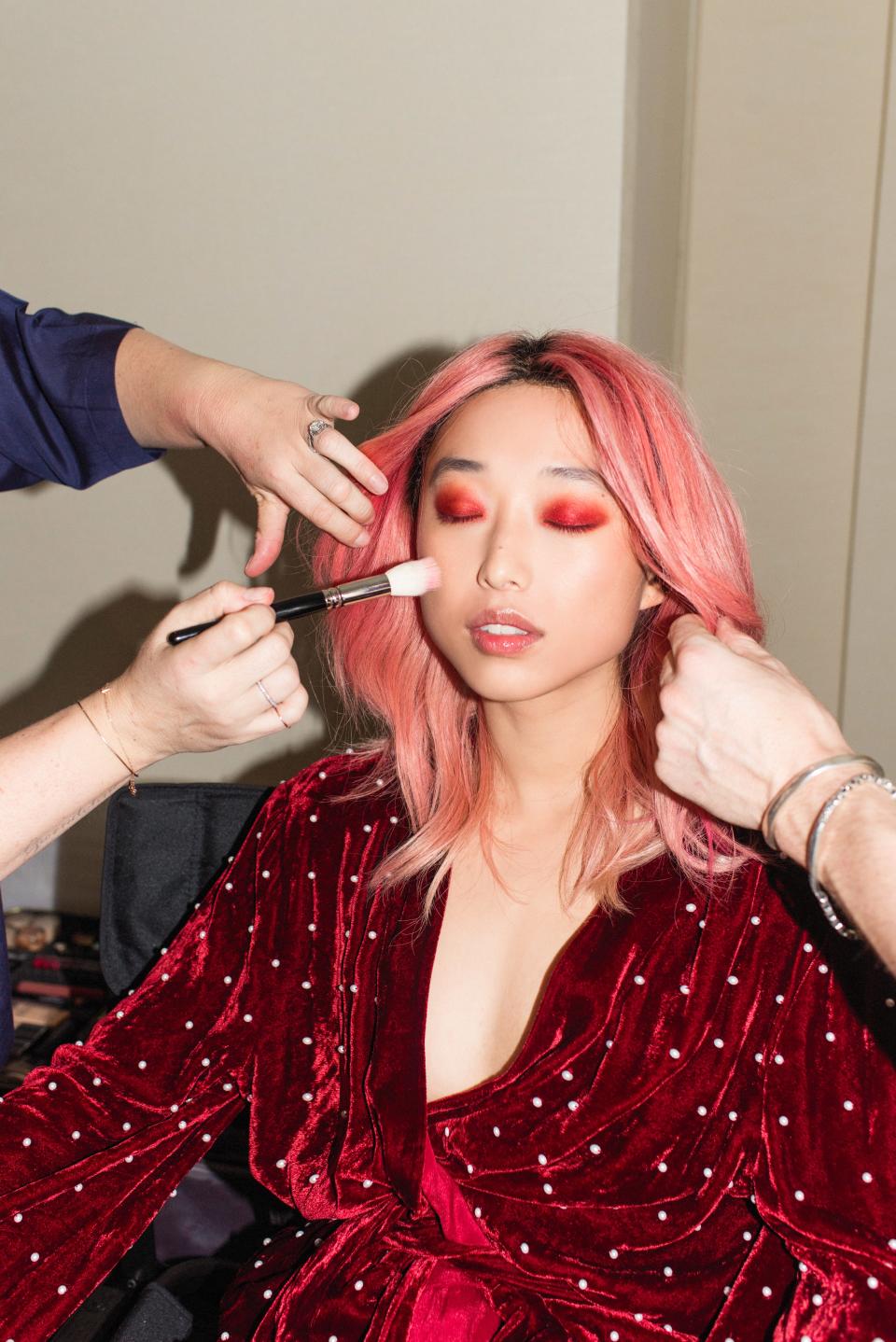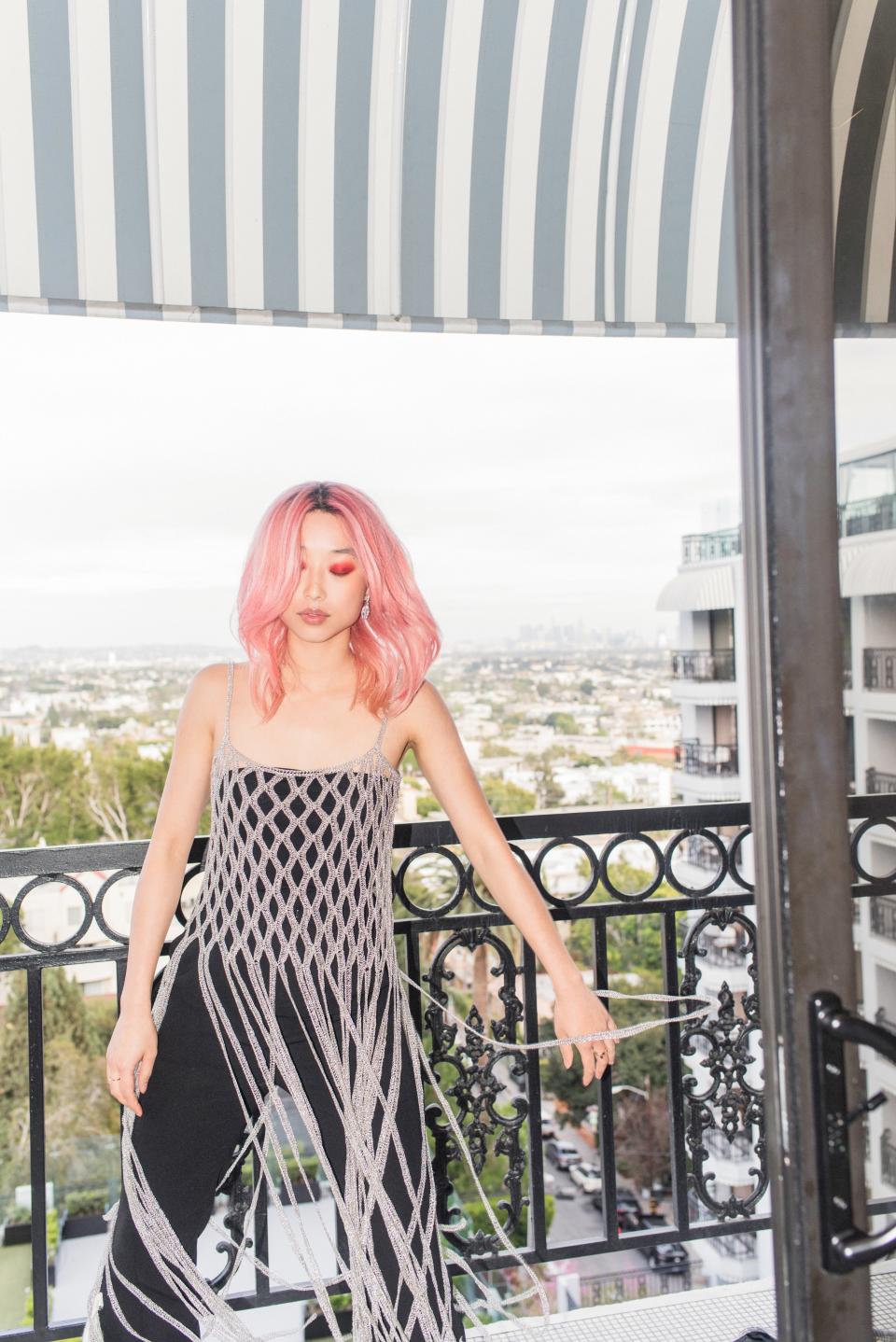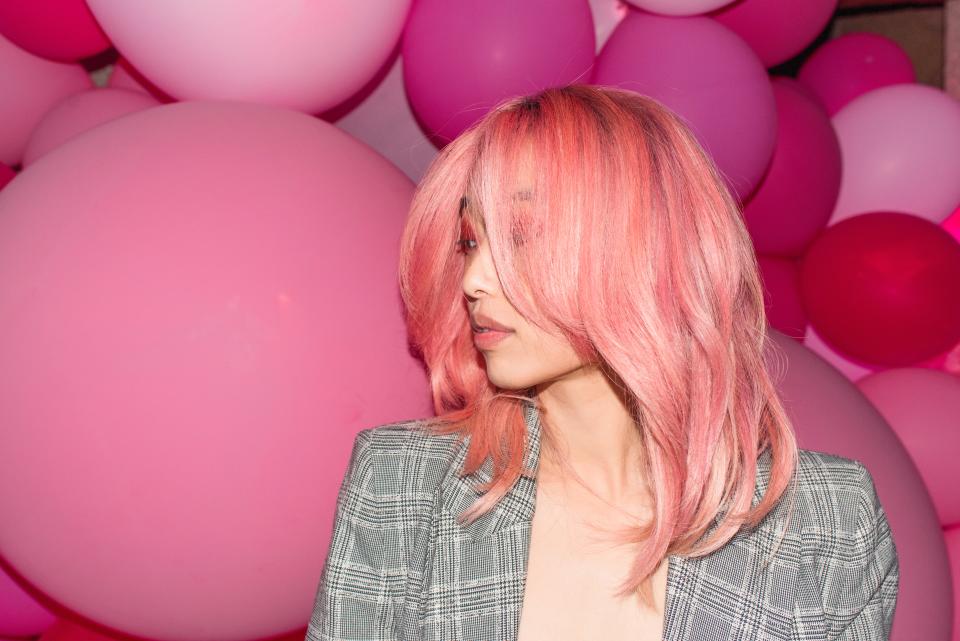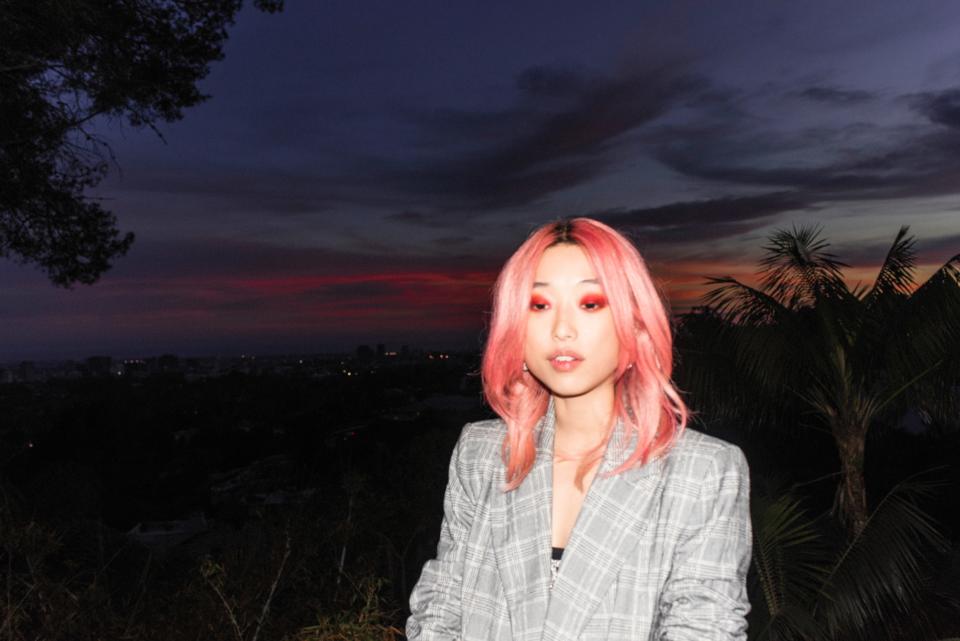Margaret Zhang on the Perfect Selfie, and Asian Representation in Beauty
The “selfie” album on my personal phone has 851 photos in it. Staring at a version of my face on a screen has, in truth, made me become a bit obsessed with what I sometimes perceive to be "flaws." It's given me an opportunity to zoom in and pick apart everything I don't love about myself — like my decade-old acne scars, or the unibrow that seems to grow back minutes after I pluck it. But that kind of familiarity has also, weirdly, made me more comfortable with my face. After staring at it 851+ times, I find myself becoming more and more used to how I look — and comfortable with all of it.
For Margaret Zhang, who photographs herself regularly, the selfie has completely shifted her perspective of beauty. The blogger, model, and photographer regularly puts herself both in front of and behind the lens, and has a visual style that's instantly recognizable to her 930,000 Instagram followers. On her feed, she frequently features her own take on selfies, although they may not instantly be recognizable as such (let’s just say there are no dog or bunny filters in sight).
Her selfies are entirely different than the ones that make up my own library, and there's a reason for that; instead of using them to examine herself, she sees them as a way of connecting with viewers on a different level. "I think it's really important that we tell stories, as opposed to focus on faces and aesthetics. They're important to convey messages and beliefs, as opposed to unprincipled visuals," she explains.

That's not to say Margaret doesn't love experimenting with different makeup and hair, though; from her previous platinum transformation to the pink strands and bright red lids she wore at Bvlgari’s Omnia Pink Sapphire fragrance launch, she has a take on beauty that's all her own. Scroll through to see her fragrance-inspired selfie series, along with her advice on the art of the perfect portrait — and how photography has helped shaped her perceptions.

“I think it actually has made me realize how distorted the beauty industry — and views on beauty — can be,” says Margaret, who noticed herself looking at faces more clinically when she started photography. “You zoom in, and you forget that it's a person. And you zoom out and you're like, this is really terrible that I'm picking apart this face in this way. I think a lot needs to change in the beauty industry, and the way that women and young girls are represented. I try not to let it affect me, but because you're seeing it all the time, it kind of trickles into your subconscious. And you're picking yourself apart in the mirror."
When speaking about distorted standards in the beauty industry, it's impossible not to also consider the matter of inclusivity — or, more accurately, the lack there of. And while many strides have been made recently, Margaret adds that there's more to be done. “It would be a bit dark to say there’s been no progress,” she says, but admits there's still a long way to go.

“It still really alarms me how little progress there has been, it kind of disappoints me," she says. "It's not really about a headcount. It's really about...who are the influential voices in senior positions as well? And who can guide the conversations about what it means to be a child of an immigrant? Or, what is the identity crisis of having very strong cultural roots, but growing up somewhere in the West?”
One of her goals is to see Asian women more widely represented — and more deeply understood — throughout the industry. "I really would just love to see Asian women celebrated and properly understood from an aesthetic perspective and from an ethnic perspective, and celebrate themselves as well," she explains, drawing from her own experiences with race as an Asian-Australian model.
"I've had a few shoots where it's like, your eyes are half-closed in the final images, but they can't tell that your eyes are half-closed. And you say, ‘Are you serious?’ It leaves you speechless."

Those experiences have made her much more deliberate about the kind of work she shares with her followers. "I really am very, very conscious about being inclusive and trying to shoot women of different ages and ethnicities,” she says. “We really try to make sure that everybody looking at my work can find something to relate to. And finding women of substance as well, who can maybe use that platform of the work that they’re photographed for to relay their message."
As for getting to know her own face, Margaret Zhang's best advice for the perfect portrait is simple: Know who you are and what you stand for.
"I think it's really good to know your body and your face really well," she says. "And not even just how it looks, but what makes you feel good. When you force yourself to smile, your body responds to that. Know your body so you can know how to make yourself feel good and in what state you feel your best."
Related: This Is Why You May Have Trouble Taking the Perfect Selfie

